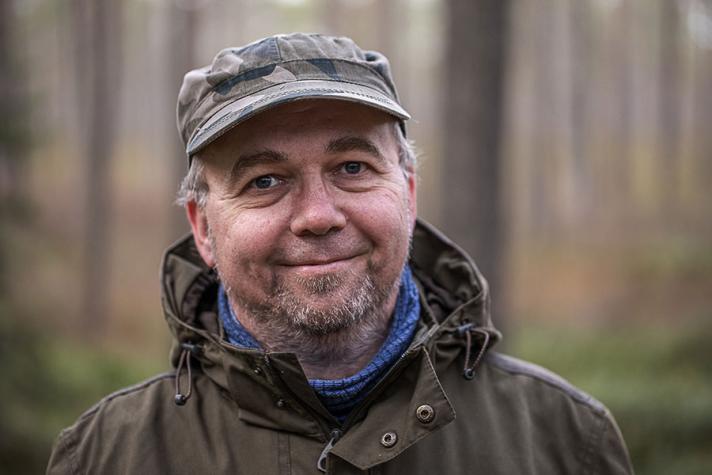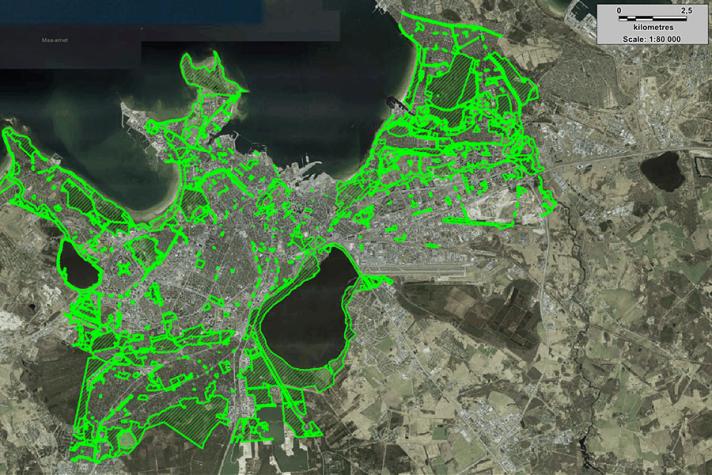Passionate about wildlife and proud citizen of Tallinn, Lauri is involved in many projects concerning the protection of green areas in Tallinn and its region. One of the things he is most proud of is the fact that Tallinn kept many natural areas under protection and continues to take good care of it.
Lauri’s educational background is in zoology but then he pursued his master’s thesis in Landscape Ecology. He also worked for eight years at the European Environment Agency (EEA) and is now giving environmental advice at the municipality of Tallinn. His position at the EEA back then gave him the opportunity to visit many capitals in Europe and to understand how urban areas are built. His main interest lies in the wildlife and the preservation of natural areas and now he is focusing on many green initiatives in his hometown and especially in the study of wild animals in the city.
First thing that Lauri is highlighting when telling us about himself and his work in Tallinn is that green areas are a big part of the Estonian capital. They represent up to 14% of the total area, without counting the ones outside the city.
Tallinn is known for its vibrant wildlife and the Estonian capital is home to various rare species. More than 20 different species have been found in Tallinn such as lynxes, roe deer and moose, which are quite rare. In total, around 200 moose are co-living with 400,000 human beings, citizens from Tallinn.
“This example shows how the ecosystem of Tallinn still is thrives. Of course, we can always do better and work on new things. A lot of work needs to be done and many initiatives are on their way”.
Lauri and some motivated volunteers are working hand in hand to make it happen.
Voluntary Camps for locals to reconnect to nature
As he explained to us, voluntary camps are happening for the past few years in Tallinn and its surroundings, especially during the summer. The activities that are undertaken entail nature preservation and raising awareness, especially within the local communities, living close to the protected areas. “It’s very important to communicate with the local people” Lauri said “by not knowing how to preserve nature, people could do mistakes, even without wanting it, so we try to inform them on how to do the right things”.
This year, around 10 voluntary camps have been organised in total. It was a great way to involve people and to keep the “big machines” away from this environmental conservation process. Lauri insisted on the fact that in today’s world, we should not think that taking care of nature can only be done by using big machines and industrialised processes. “People should go into nature and do things with their own hands”, said Lauri. That is why, these voluntary camps are small steps on the way to reconnect human beings with nature and to raise awareness on the challenges for wildlife and environmental protection.
The volunteers have been involved in several projects such as the restoration of wetland areas, close to the coastland and the restoration of bogs, called Pääsküla bogs in Estonian. There are currently around seven bog sites in the area.
The Pääsküla bogs are protected sites, owned by the cities but Lauri tries to keep it as local as possible, so that citizens can also work on its restoration and be part of the process.
Basically, the idea is to close the ditches, that have been left there for centuries, with a DEM (Digital Elevation Model), by hand. After that, volunteers dig out the small boxes of soil and put them into the ditch. Lauri explained us that the restoration of a bog takes a lot of time, you need 150 DEMs and, usually people can only do 2 DEMs per day. You can aim at restoring a whole bog after one year. It’s a long process in which you will be able to see a result in many years but it’s worth it and it’s very motivating for everyone.
A vision of the city as an ecosystem
Lauri insists on the fact that cities should be a better living environment. According to him, it’s a pity that people want to escape the cities during weekends. Everybody should be happy to live in cities, even during their free time. In a way, it shows that the conditions of living inside the cities are not as good as they should be, and they need to be changed.
“The key for it are healthy ecosystems inside the cities” - although Lauri, recognises that Tallinn is already very green, he insists on the fact that we should start seeing cities as an ecosystem itself and to think about nature and the city as one entity.
“Cities should give energy to the people living in it”. Rivers for example are “veins of the nature” and should also be present in cities, it’s something city officials should work on.


